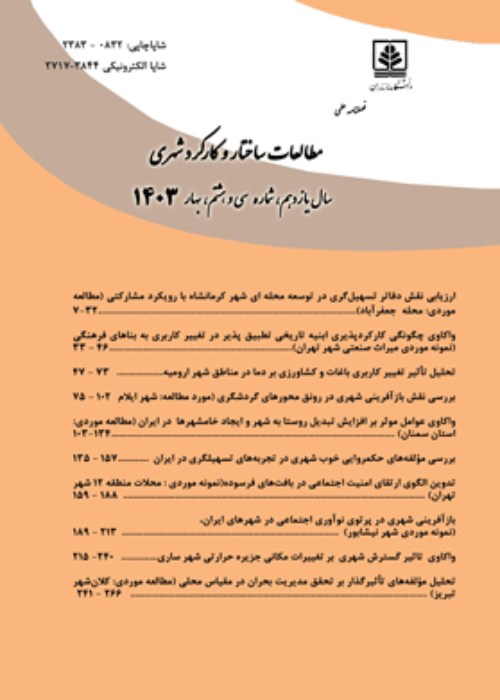Optimal Housing Pattern in the Historical Context of Kashan Based on the Teachings of Residential Building Configuration: A Case Study on the Adaptability of Building Patterns in Taher and Mansour Neighborhoods in Kashan (Iran)
Residential building configuration system in historical contexts is formed following climatic rules in response to cultural and social norms, and despite formal similarities, it follows certain rules. In recent decades, following the accelerated intrusion and manipulation of the old part of the cities, the issue of adaptability of modern housing has become one of the main concerns and challenges in the specialized community. Examining the constructed patterns narrates the ugliness of the residential building configuration system and the incompatibility of the modern housing with the historical part and the lack of coexistence between them. The research questions address how adaptability and flexibility affect the spatial configuration and to what extent the infill patterns of housing in Taher and Mansour Neighborhoods of Kashan (a city in Iran) have been able to adopt to the historical context. The study seeks to improve the quality of housing in the historical context by examining the residential building configuration system in the historical context of Kashan during the years 1956-2019 and assess the compatibility of the modern patterns with the existing rules in Taher and Mansour Neighborhoods. This study employs a qualitative method based on library studies, field evaluations and analysis. First, the factors affecting the configuration and adaptability of the optimal housing patterns have been investigated, and then the aerial photographs of the study area were drawn in Autocad environment and based on nature, Depth Map and GIS software were used to analyze the criteria. Based on the findings, the change of the construction pattern of houses from four sides (central courtyard) in the 1951s to two sides in the 1971s, the shrinkage of the residential building area, a significant increase in the construction density and disruption of the spatial integrity and cohesion, especially from the 1991s onwards, are the main factors of incompatibility of the infill patterns with the historical context. The findings show that the four indicators of form, area, compaction and spatial integration and cohesion, which are derived from physical, cultural and social norms, organize the relationship between the performance and space and guarantee the form structure and configuration of the historical context
- حق عضویت دریافتی صرف حمایت از نشریات عضو و نگهداری، تکمیل و توسعه مگیران میشود.
- پرداخت حق اشتراک و دانلود مقالات اجازه بازنشر آن در سایر رسانههای چاپی و دیجیتال را به کاربر نمیدهد.


